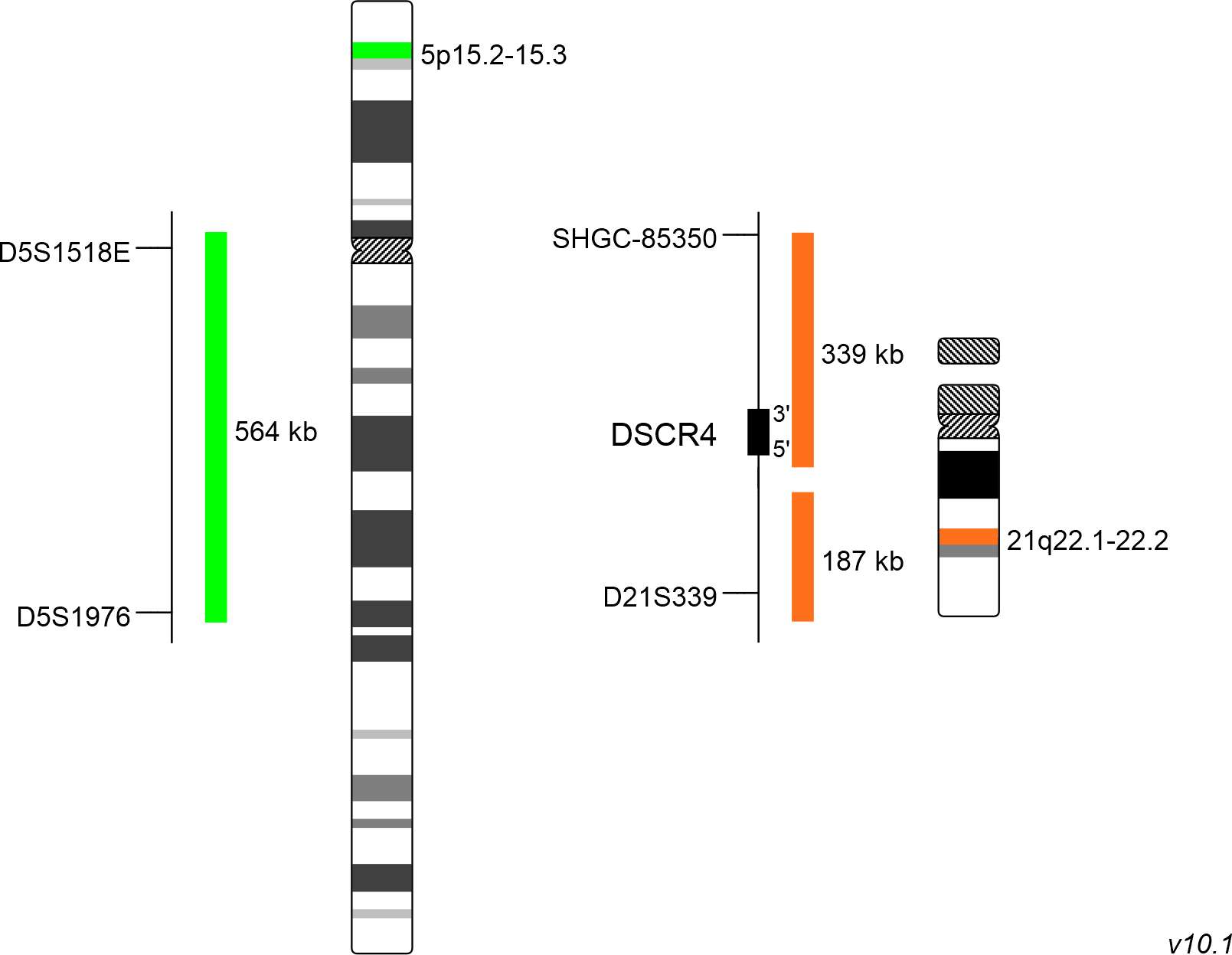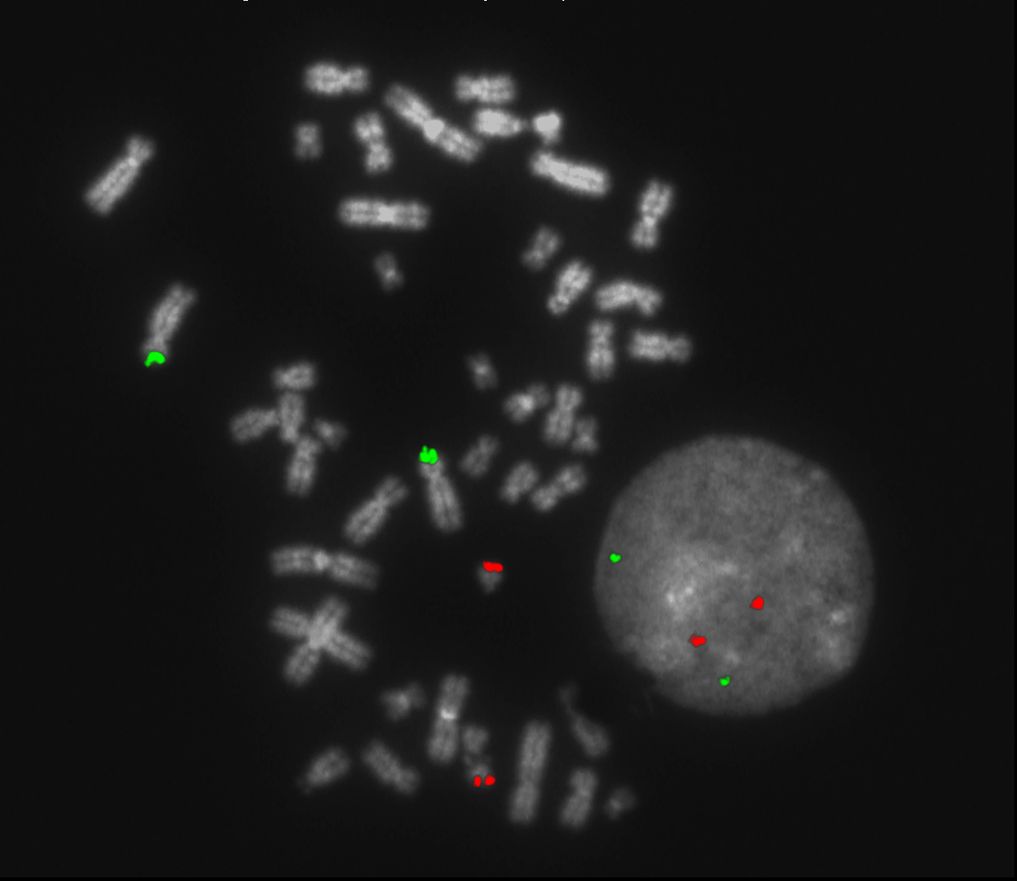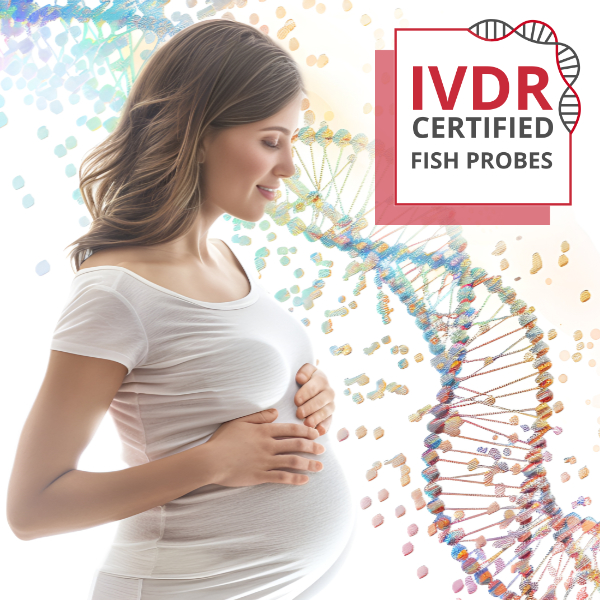
XL 5p15/21q22
Deletion/Enumeration Probe
- Order Number
- D-5155-100-OG
- Package Size
- 100 µl (10 Tests)
- Regulatory Status
- IVDD
IVDR Certification
MetaSystems Probes has already certified a wide range of FISH probes, according to IVDR.
This product remains IVDD-certified until further notice.
Discover all IVDR-certified products
XL 5p15/21q22 consists of a green-labeled probe hybridizing to a region at 5p15.2-15.3 and an orange-labeled probe hybridizing to the DSCR4 gene region at 21q22.1-22.2.
Probe maps for selected products have been updated. These updates ensure a consistent presentation of all gaps larger than 10 kb including adjustments to markers, genes, and related elements. This update does not affect the device characteristics or product composition. Please refer to the list to find out which products now include updated probe maps.
Probe map details are based on UCSC Genome Browser GRCh37/hg19, with map components not to scale.
Multiple myeloma (MM) is a malignant disorder of plasma cells representing the second most prevalent hematologic malignancy, which is characterized by a wide heterogeneity of disease progression. While some of the MM patients stay alive more than 10 years after first diagnosis, others die within a few months. Chromosomal abnormalities in tumor plasma cells are of great significance among all prognostic factors analyzed in MM. To address the significant role of the different factors, the International Myeloma Working Group has recommended the implementation of these well studied chromosomal aberrations in the revised International Staging System (R-ISS) for MM. While del(17p), t(4;14), and t(14;16) are known to be among the high-risk factors in MM, trisomic MM is generally associated with a favorable outcome. More than half of MM cases diagnosed have a hyperdiploid karyotype, characterized by gains of the odd chromosomes.
While trisomy 3 or 5 significantly improves overall survival in MM patients, trisomy 21 has the adverse effect. The study of Perrot et al analyzed the combination frequency and prognostic impact of the factors del(17p), t(4;14), del(1p32), 1q21 gain, and trisomies 3, 5, and 21 within a big cohort and found out that the most frequent combination was the one between trisomy 5 and 21 among the aberrations examined.
The combined XL 5p15/21q22 fluorescence in situ hybridization (FISH) probe is a helpful aid for diagnosis to rapidly detect trisomy 5 and, or 21 in suspected or confirmed MM cases.
Clinical Applications
- Multiple Myeloma and Plasma Cell Neoplasms (MM)

Normal Cell:
Two green (2G) and two orange (2O) signals.

Aberrant Cell (typical results):
Three green (3G) and two orange (2O) signals resulting from gain of one green signal.

Aberrant Cell (typical results):
Two green (2G) and three orange (3O) signals resulting from gain of one orange signal.

Aberrant Cell (typical results):
Three green (3G) and three orange (3O) signals each resulting from a gain of one green signal and one orange signal.
- Chretien et al (2015) Blood 126:2713-2719
- Perrot et al (2019) J Clin Oncol 37:1657-1665
- Barilà et al (2020) Blood Cancer J 10:18
Certificate of Analysis (CoA)
or go to CoA Database




